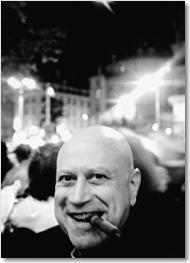In search of the roots of counterculture

Frontispiece to William Blake‘s Visions of the Daughters of Albion (1793), which contains Blake’s critique of Judeo-Christian values of marriage. Oothoon (centre) and Bromion (left), are chained together, as Bromion has raped Oothoon and she now carries his baby. Theotormon (right) and Oothoon are in love, but Theotormon is unable to act, considering her polluted, and ties himself into knots of indecision.
While the phrase “free love” is often associated with promiscuity in the popular imagination, especially in reference to the counterculture of the 1960s and 1970s, there are plenty of historical antecedents.
In 1789, radical Swedenborgians published the Plan for a Free Community, in which they proposed the establishment of a society of sexual liberty, where slavery was abolished and the “European” and the “Negro” lived together in harmony. In the treatise, marriage is criticised as a form of political repression. The challenges to traditional morality and religion brought by the Age of Enlightenment and the emancipatory politics of the French Revolution created an environment where such ideas could flourish. A group of radical intellectuals in England (sometimes known as the English Jacobins) supported the French Revolution, abolitionism, feminism, and free love. Among them was William Blake, who explicitly compares the sexual oppression of marriage to slavery in works such as Visions of the Daughters of Albion (1793).
Another member of the circle was pioneering English feminist Mary Wollstonecraft. Wollstonecraft felt that women should not give up freedom and control of their sexuality, and thus didn’t marry partner Gilbert Imlay, despite the two having a child together. Though the relationship ended badly, due in part to the discovery of Imlay’s infidelity, Wollstonecraft’s belief in free love survived. She developed a relationship with early English anarchist William Godwin, who shared her free love ideals, and published on the subject throughout his life. However, the two did decide to marry. Their child, Mary took up with the English romantic poet Percy Bysshe Shelley at a young age. Percy also wrote in defence of free love (and vegetarianism) in the prose notes of Queen Mab (1813), in his essay On Love (c1815) and in the poem Epipsychidion (1821).
Sharing the free love ideals of the earlier social movements, as well as their feminism, pacifism and simple communal life, were the utopian socialist communities of early 19th century France and Britain, associated with writers and thinkers such as Henri de Saint-Simon and Charles Fourier in France and Robert Owen in England. Fourier, who coined the term feminism, argued that true freedom could only occur without masters, without the ethos of work, and without suppressing passions; the suppression of passions is not only destructive to the individual, but to society as a whole. He argued that all sexual expressions should be enjoyed as long as people are not abused, and that “affirming one’s difference” can actually enhance social integration. The Saint-Simonian feminist Pauline Roland took a free love stance against marriage, having four children in the 1830s, all of whom bore her name. —Wikipedia








